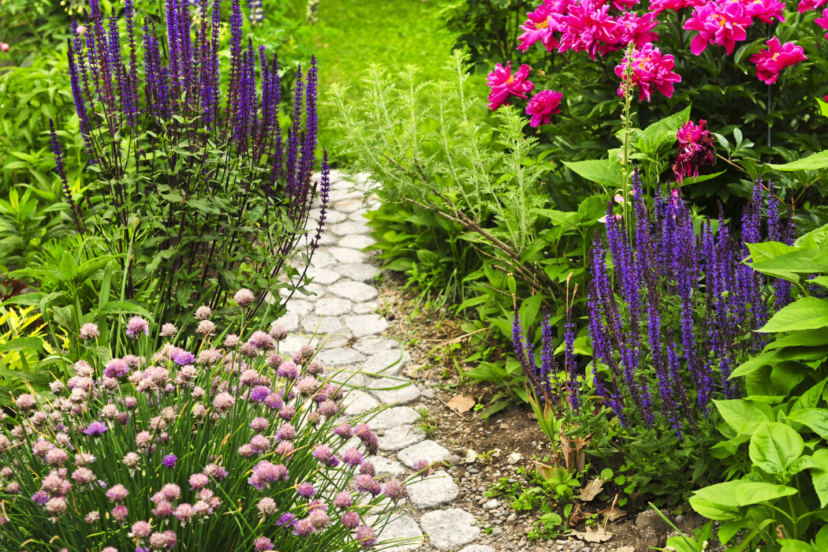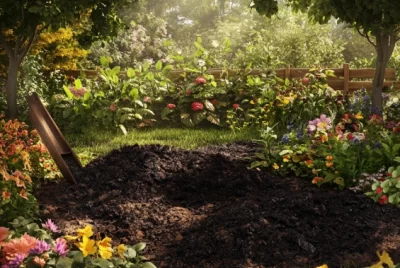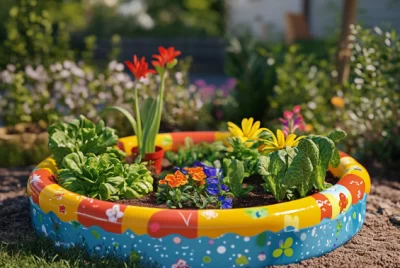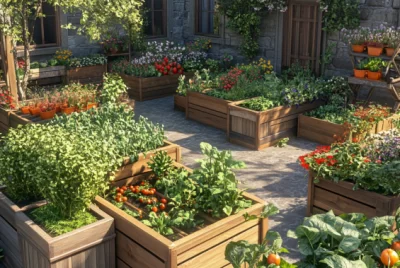Gardening Pathways: Enhancing Your Outdoor Space
Gardening pathways are more than just a way to get from one point to another in your garden; they’re a chance to add beauty and structure to your outdoor space. Imagine walking through your garden, surrounded by blooming flowers and buzzing bees, with a clear path that guides your journey and highlights the hard work you’ve put into your garden. This article is all about turning that imagination into reality.
Introduction to Gardening Pathways
Gardening pathways serve a big role in the garden. They lead us through the beautiful scenes we’ve created and make it easier to enjoy and care for our plants. But, there’s a lot more to these paths than meets the eye. In this article, we’ll explore how to make the most out of these pathways, touching on the challenges you might face and the benefits you’ll enjoy. Whether you’re a seasoned gardener or just starting, you’ll find something here to make your garden pathways both beautiful and functional.
The Importance of Gardening Pathways
First off, let’s talk about why these paths are so important. Besides guiding your steps, they help keep your garden organized. They prevent soil from getting compacted by footsteps, which can harm plant roots, and they reduce the amount of mud that might get tracked into your house. Most importantly, they’re your personal touch in the garden, reflecting your style and creativity.
Objectives of the Article
Our goal is simple: to give you the knowledge and confidence to design, create, and maintain your own gardening pathways. We’ll cover different types of paths, what materials to use, and how to keep them looking great year-round. By the end, you’ll be ready to create pathways that not only look amazing but also make your gardening easier and more enjoyable.
Understanding Gardening Pathways
Definition and Purpose
A garden pathway is a trail or a walkway in a garden or outdoor space. Its main job is to guide people through the area, but it does a lot more. It can divide different parts of your garden, like separating your vegetable patch from your flower beds, or it can lead visitors to a special spot like a fountain or a cozy sitting area. Paths also help protect your plants from being stepped on and make it easier to reach your plants for watering and care.
Types of Gardening Pathways
There are many ways to make a path in your garden. Here are a few popular types:
Natural Stone Paths
These paths use stones like slate or flagstone. They look really natural and blend in with the surroundings.
Gravel and Pebble Paths
These are made with small stones. They’re easy to make and can fit into almost any garden style.
Brick and Paver Paths
Bricks or concrete pavers can create a classic look. You can lay them in different patterns to make your path unique.
Mulch and Wood Chip Paths
These paths are super simple and great for a more natural area. They’re soft underfoot and easy to change or move.
Concrete and Stepping Stone Paths
Concrete paths are super strong and last a long time. Stepping stones are fun because you can make them in different shapes and sizes.
Each type of path has its own benefits and challenges. It’s all about choosing what works best for you and your garden. In the next sections, we’ll dive deeper into planning your pathway, the best materials to use, and how to keep it looking great through all the seasons. Stick with us to learn all about turning your garden into a well-pathed paradise!
Planning Your Gardening Pathways
Before you start digging or laying down stones, there’s some thinking to do. Planning is a big deal—it can save you time, money, and a lot of hard work later on.
Design Considerations
Path Width and Shape
Think about how you’ll use the path. A cozy, narrow path is perfect for a quiet garden stroll, but you’ll need something wider if you’re wheeling a garden cart or walking side by side with someone. Curvy paths can make your garden feel more natural and exploratory, while straight paths create a sense of order and can make small spaces feel bigger.
Choosing the Right Materials
Your path should fit the look and feel of your garden. Love a rustic vibe? Gravel or wood chips might be perfect. If you’re all about elegance, maybe go for polished stone or decorative bricks. Remember, it’s not just about looks—think about how slippery materials might be when wet, or how some might get super hot in the sun.
Integrating with Garden Design
Your path should feel like a part of your garden, not just something thrown on top. If you have a lot of wildflowers, a natural, winding path with mulch or pebbles might blend in beautifully. Have a more formal garden? Straight, neatly lined paths could be the way to go.
Practical Aspects
Drainage and Sustainability
Water needs a place to go, or you’ll end up with a muddy mess. Make sure your path is slightly elevated in the middle or has a way to drain water to the sides. Also, think about using sustainable materials like recycled glass pebbles or reclaimed wood.
Maintenance Requirements
Consider how much time you want to spend on upkeep. Gravel paths need weeding and topping up, while stone pavers might need occasional re-leveling. Choose materials that match your maintenance willingness.
Gardening Pathways: Installation Tips and Techniques
Getting your hands dirty is part of the fun. Here’s how to make sure your path stays put and looks good.
Preparing the Ground
Clear the area of weeds and grass. Dig out the path to about 6 inches deep and level it out. This is a good time to think about edging to keep your materials in place and make mowing around the path easier.
Laying the Pathway Material
Tips for Natural Stone Paths
Lay a base of sand or crushed stone for drainage. Place your stones, leaving a few inches between them for smaller stones or pebbles to fill in.
Laying Gravel and Pebbles
After your base layer, spread your gravel or pebbles. You might want to add a barrier fabric underneath to prevent weeds.
Installing Brick and Pavers
Set your bricks or pavers close together on a sand base. Use a rubber mallet to tap them into place and fill the gaps with sand.
Mulch and Wood Chips Installation
These are the easiest. Just spread them along your path after you’ve cleared and leveled the ground. Remember, you’ll need to replenish these materials every now and then. You may want to consider using bender-board or some other barrier to keep then contained.
Concrete and Stepping Stones
Concrete paths are more permanent and require mixing and pouring concrete into molds or forms. Stepping stones can be laid on a sand base, similar to bricks, but with more space between them for grass or gravel.
Gardening Pathways: Decorative Elements and Edging
The devil’s in the details, as they say. Here’s how to give your path that extra something special.
Choosing Edging Materials
Edging keeps your path materials in place and can add a neat, finished look. Use anything from metal or plastic edging to natural stones or bricks. Choose something that complements your path and the rest of your garden.
Adding Decorative Touches
Lighting Along the Path
Solar lights or low-voltage landscape lights can make your path welcoming at night and add a magical touch to your garden.
Planting Alongside Paths
Choose plants that won’t overrun the path but will soften its edges. Low-growing herbs, fragrant flowers, or even small shrubs can create a lovely border.
Accessories and Ornaments
Think about adding a bench, a bird bath, or decorative stones along the path. These little touches make the journey through your garden even more enjoyable.
Your garden path is more than just a way to get around—it’s a part of your garden’s charm and character. With the right planning and a bit of creativity, you can create pathways that are not only practical but also beautiful additions to your outdoor space.
Gardening Pathways: Maintenance and Upkeep
Now that you’ve got a beautiful path, let’s make sure it stays that way. Regular maintenance is the key to a path that looks great year after year.
Routine Maintenance Tips
Walk your path regularly to check for weeds, loose stones, or pavers. Pull weeds by hand or use a natural herbicide to keep them under control. If stones or pavers become loose, reset them promptly to prevent tripping hazards.
Repairing Common Issues
Over time, gravel and mulch paths may thin out or develop bare spots. Add more material as needed to keep them full and comfortable to walk on. For paved paths, watch for cracks or shifts. Early repairs can prevent bigger problems down the road.
Inspiration and Ideas for Gardening Pathways
Feeling inspired? Here are some ideas to get your creative juices flowing.
Themed Pathways
Zen Garden Paths: Use smooth stones and sand to create a peaceful, meditative space.
Cottage Garden Paths: Opt for brick or stone bordered by lush, flowering plants for a cozy, whimsical look.
Modern Garden Paths: Sleek pavers or concrete with minimalistic landscaping can create a contemporary vibe.
Creative Use of Materials
Recycled and Eco-Friendly Options: Look for unique materials like crushed recycled glass or reclaimed wood.
Unique Material Combinations: Mix materials, like stone with pebble inlays or wood bordered by gravel, for a path that’s uniquely yours.
Conclusion
Gardening pathways are much more than mere tracks through your outdoor space; they’re an expression of your style and a fundamental part of your garden’s design. Whether you prefer the rustic charm of wood chips, the elegance of polished stone, or the earthy feel of gravel, there’s a pathway material and style out there for you.
Remember, the key to a successful garden pathway is in the planning and preparation. Consider your garden’s overall design, the practicality of the materials, and how much maintenance you’re willing to undertake. Don’t forget to personalize your path with edging, decorative touches, and lighting to make it truly yours.
As you embark on your garden pathway project, keep these tips and ideas in mind. With a little effort and creativity, you can create a pathway that enhances your garden’s beauty, functionality, and enjoyment. So grab your gardening gloves, and let’s pave the way to a more beautiful garden!
FAQs on Gardening Pathways
1. Can I mix different materials for my garden pathway?
Absolutely! Mixing materials can add texture and visual interest to your garden. For instance, you might combine gravel with stepping stones to create a path that’s both practical and visually appealing. Just ensure the materials complement each other and the overall style of your garden.
2. How wide should my garden path be?
It depends on its use. For a path where two people can walk side by side, aim for at least 36 to 48 inches wide. If it’s a utility path for something like a wheelbarrow, 24 to 36 inches should suffice. For single-person garden trails, 18 to 24 inches will do the trick.
3. What’s the best way to keep weeds from growing on my gravel path?
Using a landscape fabric or weed barrier beneath your gravel can significantly reduce weed growth. It allows water to drain through while blocking sunlight from reaching the soil, preventing weeds from sprouting. Regular maintenance, like pulling weeds when they appear and applying a pre-emergent herbicide, can also help.
4. How do I ensure my garden pathway is accessible to everyone?
To make your pathway accessible, consider a smooth and stable surface material like compacted fine gravel or pavers. Ensure the path is wide enough for wheelchair access (at least 36 inches) and has a gentle slope (no more than a 1:20 gradient). Avoid steps or sharp curvatures for easier navigation.
5. How often should I replace the mulch or wood chips on my path?
Mulch and wood chips tend to decompose over time, so it’s a good idea to refresh these materials annually or as needed to maintain the path’s appearance and functionality. The rate of decomposition varies depending on the material type, climate, and how much foot traffic your path receives.




